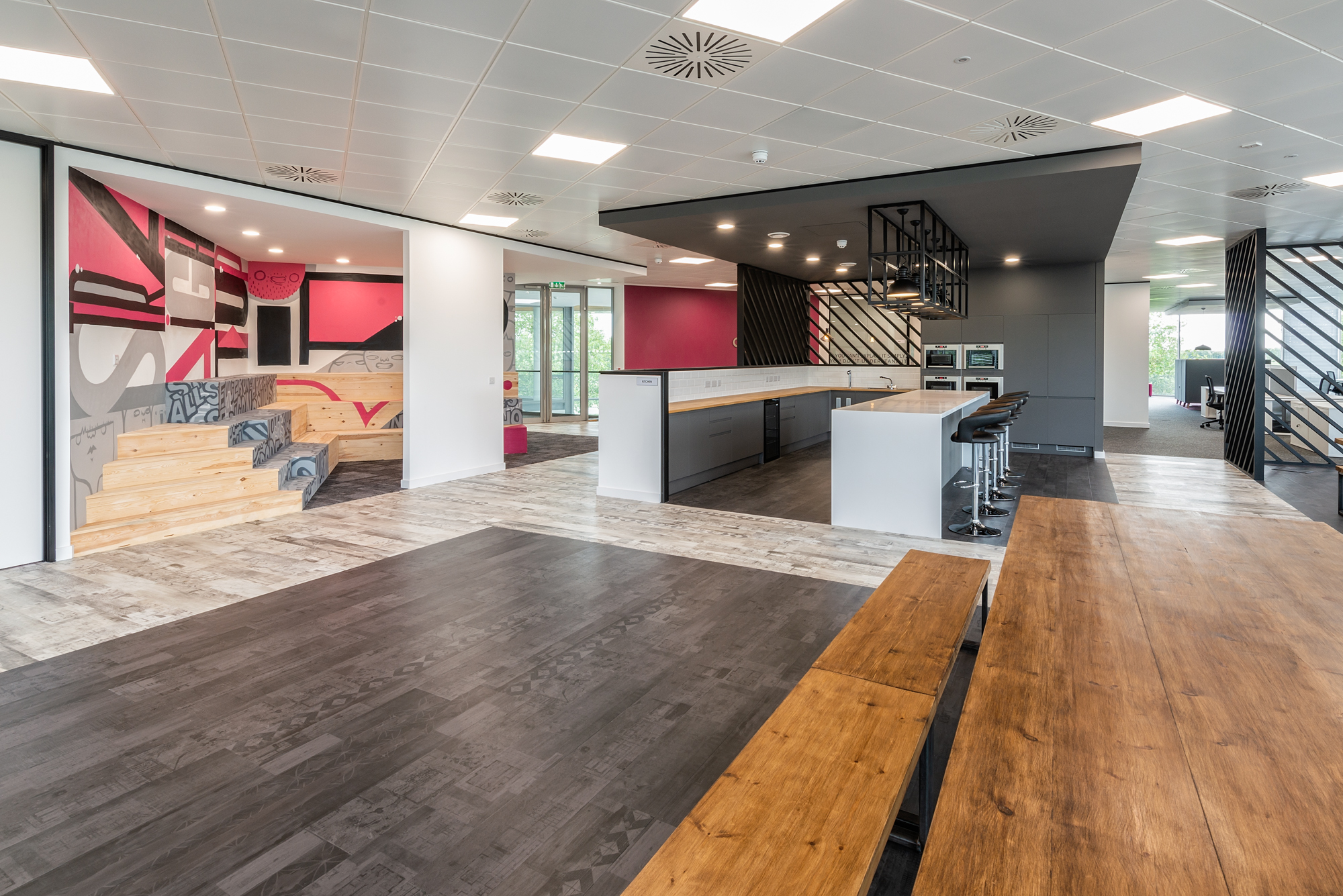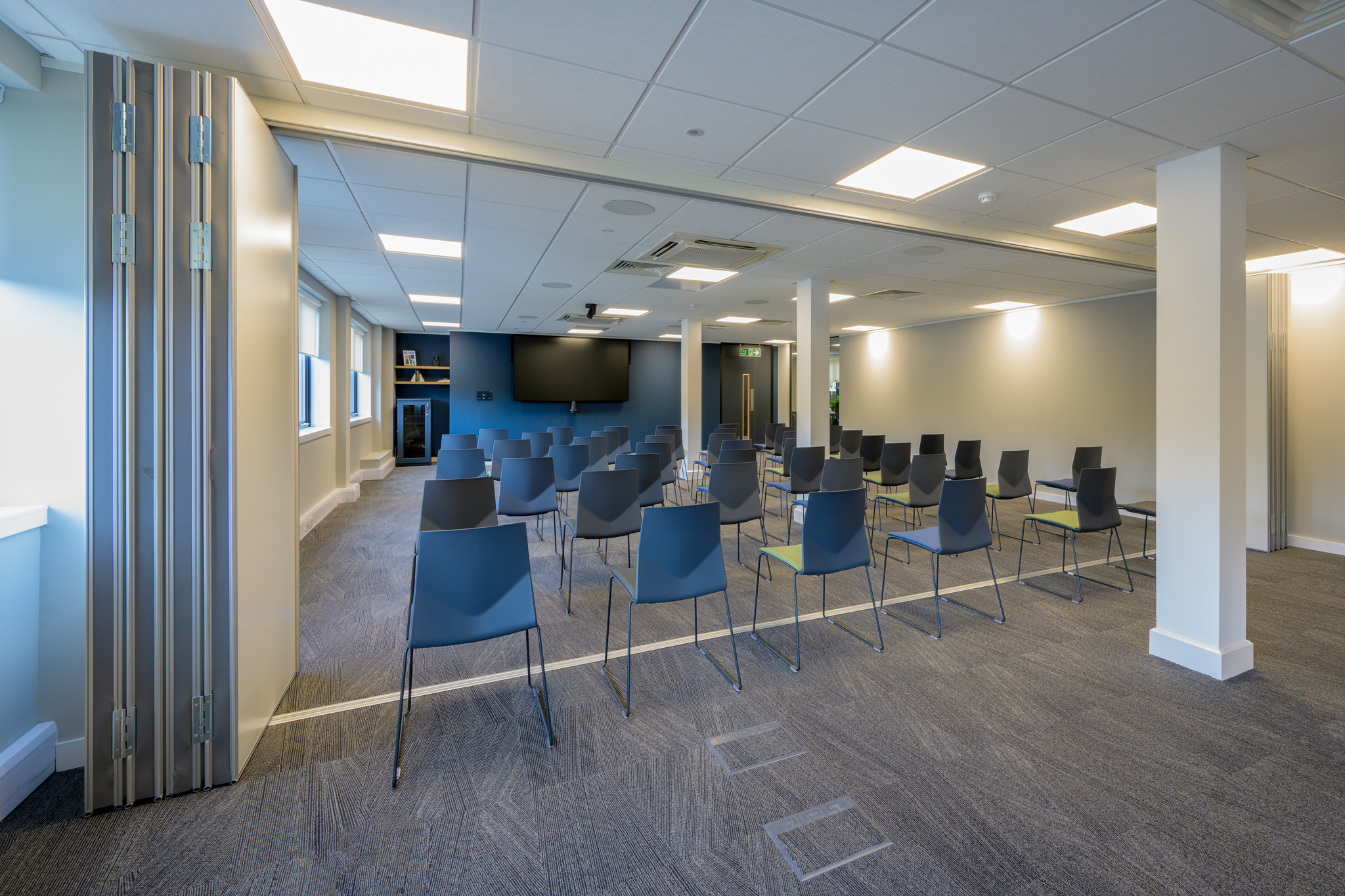The pandemic significantly influenced the future of the office and the way in which we use our workspaces. An increase in hybrid working and a shift towards more flexible working practices has resulted in a seismic shift in priorities when planning or designing an office space.
Rather than open plan offices, lined with desks, today’s employers are recognising the need to create space for collaborative work.
A focus on collaboration in office design means removing any barriers, promoting communication, and inviting workers to come together.
“It is time to move away from the old-fashioned concept of one-size-fits-all.
Designing your workplace with flexibility and adaptability front of mind, can ensure you are addressing the neurodiverse needs of all employees.
By considering the different work styles of your team and creating dedicated spaces for collaboration and agility at the initial stages of planning your office, you can foster a sense of community at work. This in turn will enhance your employees’ overall experience of being at work, making them far more likely to want to spend time in the office.”
Comments Katie Oldknow, Senior Interior Designer, at COEL
In this blog, we explore some of ways in which commercial interior designers are creating designated spaces for collaboration – but crucially, how they are planning these spaces with the varying needs of today’s diverse workforces in mind.
We will introduce [and show the different uses for] neighbourhoods, microenvironments, and pivot spaces.
Office neighbourhoods are purpose-built zones that offer functional and flexible work environments to support productivity, creativity, and collaboration.
Examples include private offices, open-plan areas, meeting rooms, lounges, and common spaces, all designed to meet the specific needs of the employees occupying them.
Imagine having a ‘social space’ where you can take time out to relax with a coffee or zone out when on a short break by dipping into a good book. Or venture into an ‘ideas and training space’ where you can immerse yourself in innovation, collaborative brainstorming, and creativity.
The neighbourhood setup is all about teamwork and making the dream work, as Steve Jobs once said: “Great things in business are never done by one person. They’re done by a team of people.”
The community aspect of office neighbourhoods brings people together for better collaboration and improved productivity in the workplace, win-win!

The image above shows the communal space for Stobbs, who wanted to create an inviting and design-led space for casual collaboration in their Cambridge offices.
Now more than ever, organisations need to deliver workspaces that go beyond what a home or traditional office space can offer. Think more intuitive, appealing working environments with more opportunities for social engagement with peers, more space to think and take time out.
How can you create new spaces within the workplace that cater for an enhanced and post-pandemic employee experience but on a small scale?
Maybe space is limited or maybe you have underutilised space which could be put to better use. Creating a microenvironment might just be the answer.
Similar to workspace neighbourhoods, a microenvironment is a very small, dedicated zone within the office, that provides an entirely alternative setting for a specific use within the overall space.
The sky is the limit when it comes to microenvironments, so you can get creative when planning your office space and utilise smaller spaces that will endorse more creativity and innovation within the workplace.
Some examples of a microenvironment could be:
The key takeaway here is that the solution is tailored to the needs of your organisation and its employees.

The image above shows one of several microenvironments we delivered for Agile Analog to create a variety of options for more private collaboration. In the background of the image, you can see a space which can be closed off using a screen to provide employees with much needed space for down time.
The concept of pivot spaces is centred around combining aesthetically pleasing design features with multifunctionality, while keeping the focus on collaboration and productivity.
Despite not being new, pivot spaces have revolutionised the way we plan office spaces. They have paved the way for improved, tech-enabled, spaces, with the scope to adapt and ‘pivot’ [!] to provide space for creativity.
These spaces could be specific zones or settings within the wider scope of the workspace, that can be adapted or reconfigured with ease at any point during the working day.
For example, a meeting space might be an enclosed hub for private video meetings during the morning. But, in the afternoon, it could open up and transform into a wider space for training purposes. The same space could be used as a relaxing social space for casual collaboration or event venue in the late afternoon/early evening.
What are the key features of a pivot space?
Though pivot spaces vary in nature, here are a few key features that make up pivot spaces:
Office furniture is crucial when creating an effective pivot space. Modular seating and tables are a smart choice, as these can be moved and combined in a plethora of ways depending on what your workers need.
Your goal should be to create innovative spaces to encourage workers back to their place of work, because it offers ‘more than just an office’.

Absolutely! Depending on the size of the organisation; bigger workspaces, with more employees, could include a few microenvironments forming part of wider neighbourhood spaces. On the other hand, businesses with less space and fewer employees, might have more stand-alone microenvironments instead.
The use of adaptable office furniture is key here. Adding one meeting booth into an otherwise redundant space could both offer an opportunity for privacy, perhaps on a video call, and also act as a way to divide up open spaces.
This is highly variable but as a rough guide we would suggest a minimum of fifty square feet per desk space, with 100 square feet being advisable.
It is important to carefully plan out your office space based on the different areas you need. You will need to consider how much of the space should be desking, what meeting and private office spaces you need and allow space for services and amenities.
However, you could take the surface area of each item you need in the office and add these together to give you the minimum space you will need for those items.
Laying these out with clear access routes and space surrounding them, without blocking any window or door access will give you an early starting point for space planning.
This decision takes careful planning and consideration based on your way of working. We recommend that you start with a workplace audit to fully understand how you will utilise the space.
Ask yourself questions like:
Our experienced team of space planners and designers can help you to decide how best to plan your office space. Click on the button below to find out more about our space planning service:
Office Interior Planning & Design
You can also read our handy guide on how to plan your office space here.